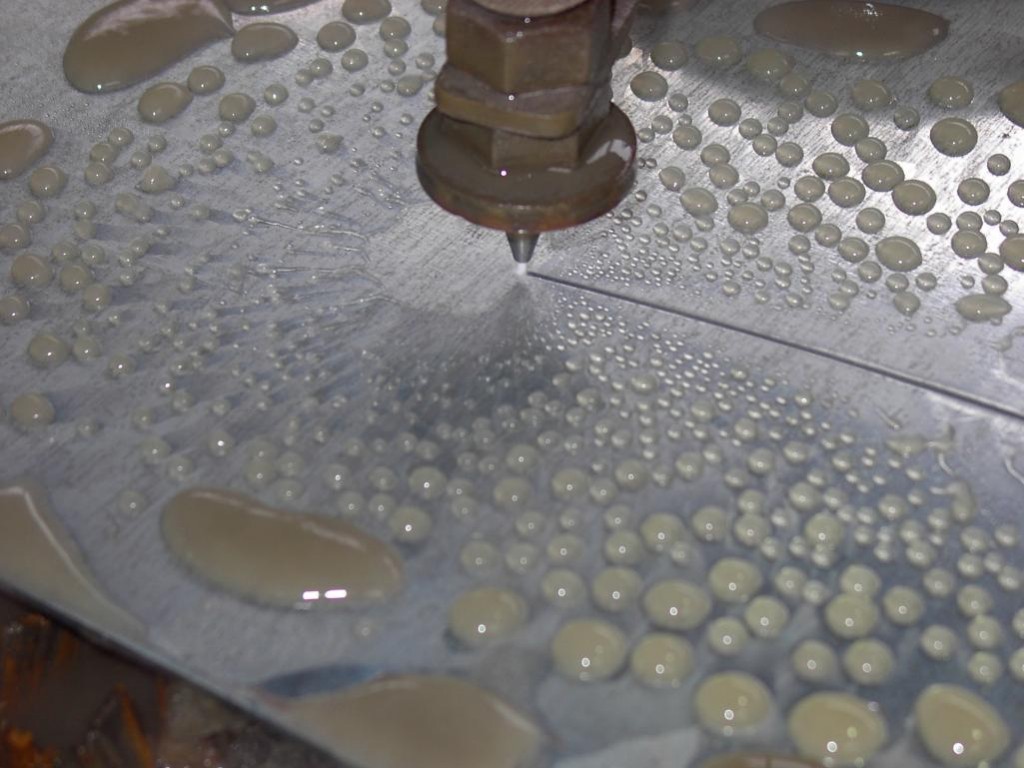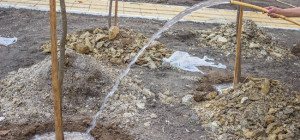[youtube https://www.youtube.com/watch?v=enJPhDH8X5c]
Laser cutting and waterjet cutting are the two most common cutting processes used in manufacturing. The type of material as well as the desired end result, will dictate which of the two methods will be best, but there are other fundamental differences between them and the materials that are best suited to each. In this blog post, we will look at the difference between laser cutting and water jet cutting in terms of materials and applications and precision and safety.
Laser Jet Cutting
Laser cutters (which is similar in certain ways to ultrasonic cutting) rely on a gas, CO2 laser, for example, for energy. In considering laser cutting, one should give due thought to the applications and materials, and the safety and precision hoped to be achieved in the process.
Materials and Applications
Plastic, glass, wood, and a variety of other materials (including all metals with the exception of reflective metals) are ideal for laser cutting. But, in the case of material combinations that produce different melting points, laser cutting can be difficult. Laser cutters are extremely well-suited to materials with a thickness of between 0.12" and 0.4". They are typically used to cut sheets of steel of medium density. CO2 lasers typically will be used to weld, drill, cut, ablate, structure, and engrave.
Precision and Safety
In terms of laser cutting, precision is virtually a non-issue (assuming a minimum size cutting slit of 0.006"). Based on the laser's speed. If proper distance cannot be maintained and partial burring does occur, thinner work pieces could suffer from gas pressure, resulting in potential minor structural changes and deformation, as a result of thermal stress, in which case the cut material will likely appear striated.
Proper ventilation to protect operators from smoke and dust, as well as toxic fumes that may accompany cutting certain plastics. But overall the risks in working with laser cutting machines are very low.
Water Jet Cutting
Rather than light and energy, water jet cutters cut material with pressurized water. Garnets and/or aluminum oxide are often added, to increase cutting ability, which essentially acts as a natural erosion process, only much more swiftly and concertedly.
Material and Applications
Suitable for virtually any material, water jets have the drawback of potential delamination with combination materials. They can be used for 3D material, occasionally, and demonstrate limited sandwich structures and cavities capabilities. For materials with limited access cutting is possible, but problematic.
These agents generally cut, ablate, and structure stone, ceramics, and thick metals, and those materials in the thickness range of between 0.4" and 2.0" can benefit from water jet cutting.
Precision and Safety
Because water jet cutting isn't as precise as laser cutting (a minimum cut size slit of .02") and the high level of force employed, thin and small parts can suffer with this type of process and must be handled carefully. Another consideration is that water jets can make a surface appear sand-blasted due to the added abrasives. Goggles, by all means, should be worn to protect the eyes and face.
Sources:
“Laser Cutting and Machining Tools”, Coherent, http://www.coherent.com/Products/?1899/Laser-Cutting-and-Machining-Tools
“Laser Cutting Vs. Waterjet Cutting”, Thomasnet.com, http://www.thomasnet.com/articles/custom-manufacturing-fabricating/laser-cutting-waterjet-cutting










It’s great to know that laser cutter is such a good investment for metal fabrication companies because it can be used to weld, drill, cut, ablate, structure, and engrave. My uncle is planning to start a metal fabrication shop in his hometown. Since I owe a lot to him for sacrificing so much just to provide food and shelter to me when I was orphaned, I figured I could buy him a laser cutting machinery to help him start his business. Thanks for this information!